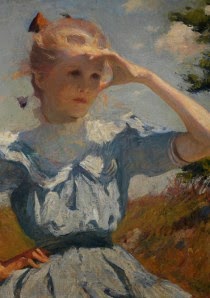6 juillet - 5 octobre
http://www.musee-saint-antoine.fr/
De multiples récits et images descriptives abondent depuis l'Antiquité sur la nature des pierres, leur origine aux confins du monde, leur emprise sur l'imaginaire et leur fonction symbolique. Les traités et lapidaires répondent à un vocabulaire normé, teinté de merveilleux. En filigrane, ils éclairent l'histoire des civilisations en un langage multiforme. Prisées pour leur couleur, leur éclat et leur beauté, creusets de toutes les vertus médicinales ou magiques, auréolées par essence de mystère, les gemmes naturelles et les verres colorés, les perles comme les coraux magnifient les reliquaires et les évangéliaires, parent à l'envi bijoux, objets d'art ou ornements.
Entre ciel et terre, d'Orient en Occident, les gemmes, nées de la rosée du ciel selon la métaphore d'Isidore de Séville, touchent à la quintessence de l'or.
C'est sans conteste de cette dimension onirique et extraordinaire que nait leur histoire, qui, au-delà de la science expérimentale et de l'attention des minéralogistes et amateurs éclairés de l'époque moderne, demeure synonyme d'un ailleurs fabuleux.
Cette exposition se présentera comme un voyage au cœur de l'histoire des gemmes du Moyen Âge au XIXe siècle, au gré de peintures, estampes, objets d'art, manuscrits et cristaux en trois parcours thématiques : L'homme, le cristal, la perle et le corail : mythes et symboles - Le Roi, le prince et l'évêque : des gemmes en majesté - La science des gemmes : des lapidaires aux cabinets de minéralogie.
http://www.musee-saint-antoine.fr/
De multiples récits et images descriptives abondent depuis l'Antiquité sur la nature des pierres, leur origine aux confins du monde, leur emprise sur l'imaginaire et leur fonction symbolique. Les traités et lapidaires répondent à un vocabulaire normé, teinté de merveilleux. En filigrane, ils éclairent l'histoire des civilisations en un langage multiforme. Prisées pour leur couleur, leur éclat et leur beauté, creusets de toutes les vertus médicinales ou magiques, auréolées par essence de mystère, les gemmes naturelles et les verres colorés, les perles comme les coraux magnifient les reliquaires et les évangéliaires, parent à l'envi bijoux, objets d'art ou ornements.
Entre ciel et terre, d'Orient en Occident, les gemmes, nées de la rosée du ciel selon la métaphore d'Isidore de Séville, touchent à la quintessence de l'or.
C'est sans conteste de cette dimension onirique et extraordinaire que nait leur histoire, qui, au-delà de la science expérimentale et de l'attention des minéralogistes et amateurs éclairés de l'époque moderne, demeure synonyme d'un ailleurs fabuleux.
Cette exposition se présentera comme un voyage au cœur de l'histoire des gemmes du Moyen Âge au XIXe siècle, au gré de peintures, estampes, objets d'art, manuscrits et cristaux en trois parcours thématiques : L'homme, le cristal, la perle et le corail : mythes et symboles - Le Roi, le prince et l'évêque : des gemmes en majesté - La science des gemmes : des lapidaires aux cabinets de minéralogie.






